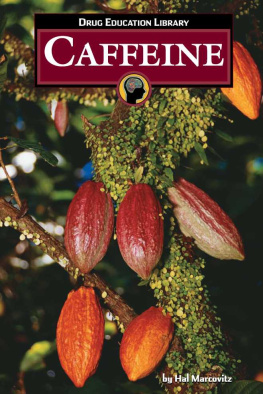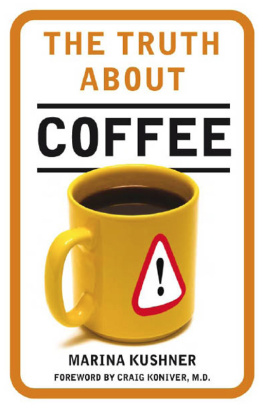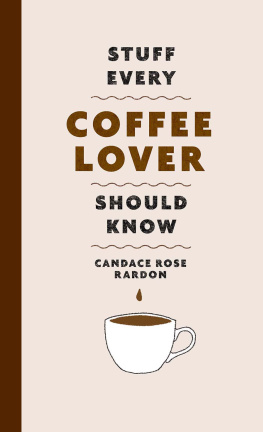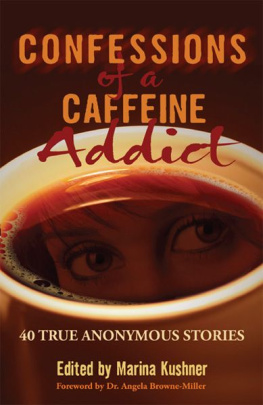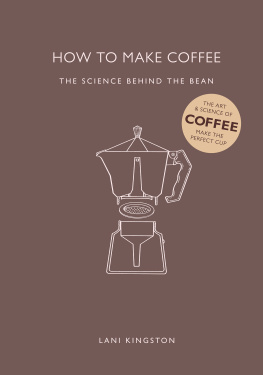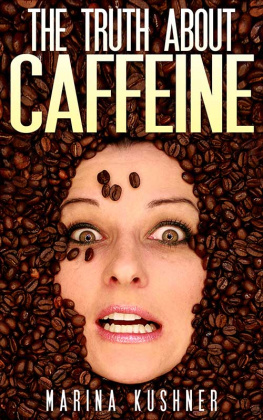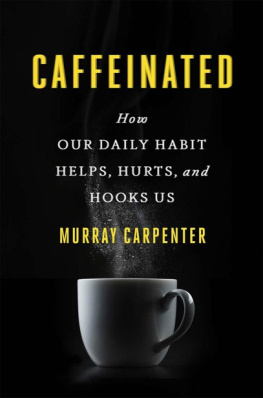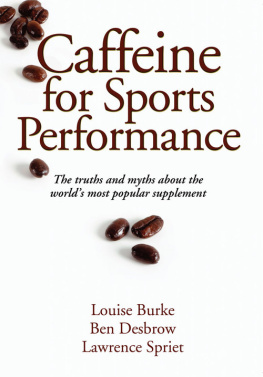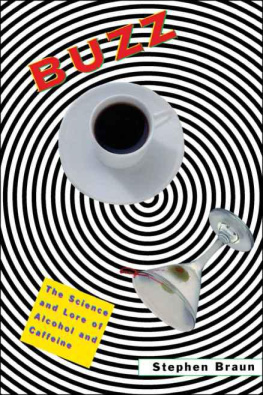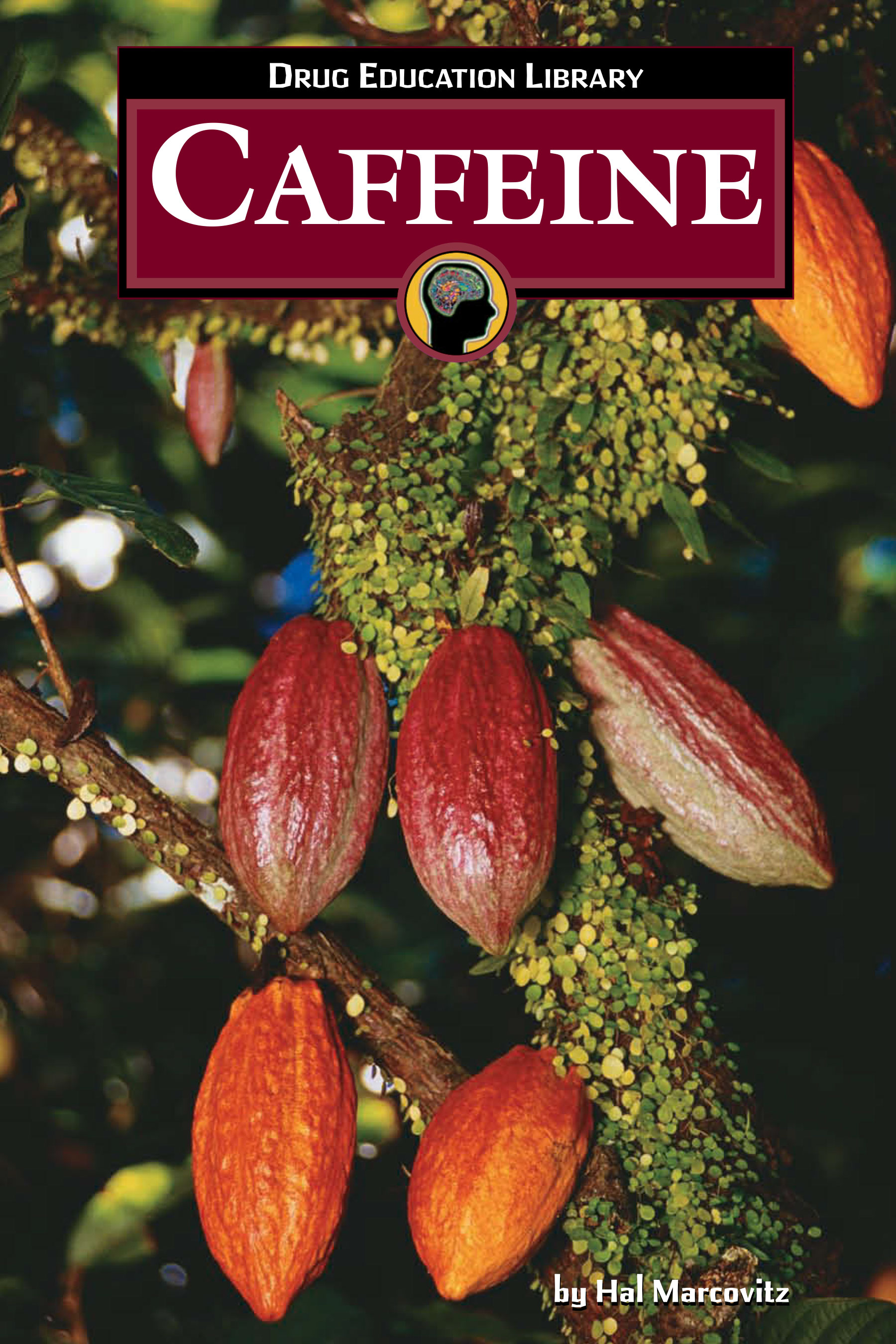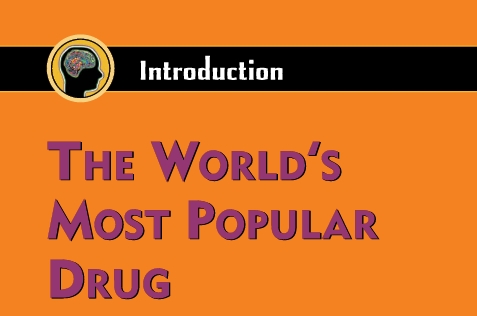Produced by OTTN Publishing, Stockton, N.J.
2006 Thomson Gale, a part of The Thomson Corporation.
Thomson and Star Logo are trademarks and Gale and Lucent Books are registered trademarks used herein under license.
For more information, contact Lucent Books 27500 Drake Rd.
Farmington Hills, Ml 46331-3535
Or you can visit our Internet site at http://www.gale.com
ALL RIGHTS RESERVED.
No part of this work covered by the copyright hereon may be reproduced or used in any form or by any meansgraphic, electronic, or mechanical. Including photocopying, recording, taping, Web distribution or information storage retrieval systemswithout the written permission of the publisher.
Every effort has been made to trace the owners of copyrighted material.
LIBRARY OF CONGRESS CATALOGING-IN-PUBLICATION DATA
Marcovitz, Hal.
Caffeine / by Hal Marcovitz.
p. cm. (Drug education library)
Includes bibliographical references and index.
ISBN 1-59018-863-2 (hard cover: alk. paper)
1. CaffeinePhysiological effectJuvenile literature. 2. Caffeine habitHealth aspectsJuvenile literature. I. Title. II. Series.
RC567.5.M37 2006 615'.785dc22
2005036214
Contents
INTRODUCTION
The Worlds Most Popular Drug
CHAPTER ONE
Caffeine Through the Ages
CHAPTER TWO
How Caffeine Impacts Human Health
CHAPTER THREE
Addicted to Caffeine
CHAPTER FOUR
Caffeine and Sports
CHAPTER FIVE
Living a Caffeine-Free Life
T he development of drugs and drug use in America is a cultural paradox. On the one hand, strong, potentially dangerous drugs provide people with relief from numerous physical and psychological ailments. Sedatives like Valium counter the effects of anxiety; steroids treat severe burns, anemia, and some forms of cancer; morphine provides quick pain relief. On the other hand, many drugs (sedatives, steroids, and morphine among them) are consistently misused or abused. Millions of Americans struggle each year with drug addictions that overpower their ability to think and act rationally. Researchers often link drug abuse to criminal activity, traffic accidents, domestic violence, and suicide.
These harmful effects seem obvious today. Newspaper articles, medical papers, and scientific studies have highlighted the myriad problems drugs and drug use can cause. Yet, there was a time when many of the drugs now known to be harmful were actually believed to be beneficial. Cocaine, for example, was once hailed as a great cure, used to treat everything from nausea and weakness to colds and asthma. Developed in Europe during the 1880s, cocaine spread quickly to the United States where manufacturers made it the primary ingredient in such everyday substances as cough medicines, lozenges, and tonics. Likewise, heroin, an opium derivative, became a popular painkiller during the late nineteenth century. Doctors and patients flocked to American drugstores to buy heroin, described as the optimal cure for even the worst coughs and chest pains.
As more people began using these drugs, though, doctors, legislators, and the public at large began to realize that they were more damaging than beneficial. After years of using heroin as a painkiller, for example, patients began asking their doctors for larger and stronger doses. Cocaine users reported dangerous side effects, including hallucinations and wild mood shifts. As a result, the U.S. government initiated more stringent regulation of many powerful and addictive drugs, and in some cases outlawed them entirely.
A drugs legal status is not always indicative of how dangerous it is, however. Some drugs known to have harmful effects can be purchased legally in the United States and elsewhere. Nicotine, a key ingredient in cigarettes, is known to be highly addictive. In an effort to meet their bodies demands for nicotine, smokers expose themselves to lung cancer, emphysema, and other life-threatening conditions. Despite these risks, nicotine is legal almost everywhere.
Other drugs that cannot be purchased or sold legally are the subject of much debate regarding their effects on physical and mental health. Marijuana, sometimes described as a gateway drug that leads users to other drugs, cannot legally be used, grown, or sold in this country. However, some research suggests that marijuana is neither addictive nor a gateway drug and that it might actually benefit cancer and AIDS patients by reducing pain and encouraging failing appetites. Despite these findings and occasional legislative attempts to change the drugs status, marijuana remains illegal.
The Drug Education Library examines the paradox of drugs and drug use in America by focusing on some of the most commonly used and abused drugs or categories of drugs available today. By discussing objectively the many types of drugs, their intended purposes, their effects (both planned and unplanned), and the controversies surrounding them, the books in this series provide readers with an understanding of the complex role drugs and drug use play in American society. Informative side-bars, annotated bibliographies, and organizations to contact lists highlight the text and provide young readers with many opportunities for further discussion and research.
E ach year, Americans consume approximately 2.4 billion gallons of tea, 6.3 billion gallons of coffee, 15.3 billion gallons of soft drinks, and 3.1 billion pounds of chocolate. These products share a common ingredient: caffeine, a stimulant that affects the brain and central nervous system.
Consumption of caffeine is far from an American phenomenon. In many countries, the use of coffee and tea is a part of the national culture. Caffeine-bearing crops like coffee or cacao beans, kola nuts, and tea leaves dominate the economies of numerous countries in South and Central America, Africa, and Asia. Although worldwide consumption figures are impossible to estimate, there is no doubt that caffeine is the most commonly used drug in the world.
The chemical structure of caffeine is CsHioN-tCh, meaning it is composed of carbon, hydrogen, nitrogen, and oxygen atoms. Caffeine is a substance that occurs naturally in plants. Botanists believe it is a product of evolution; the substance is poisonous to certain insects, so it protects the plant from being damaged by bugs. There are about sixty plants that produce caffeine, most of which grow in tropical zones.
Caffeine is generally considered a beneficial drug because of its many positive attributes. Each morning millions of people rely on caffeines stimulating effects by beginning their days with a cup of coffee or tea. Some writers, artists, and other creative people insist that caffeine helps clear their minds and enhance their powers of concentration. Similarly, some athletes have found that consuming caffeine shordy before workouts or competitions helps them perform better. Caffeine has also been found to help people lose weight, and may help prevent certain kind of cancers, as well as diabetes and other diseases.

